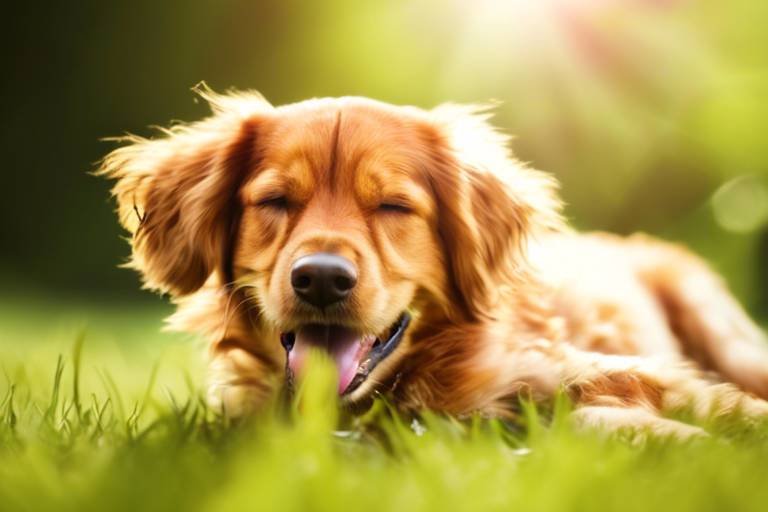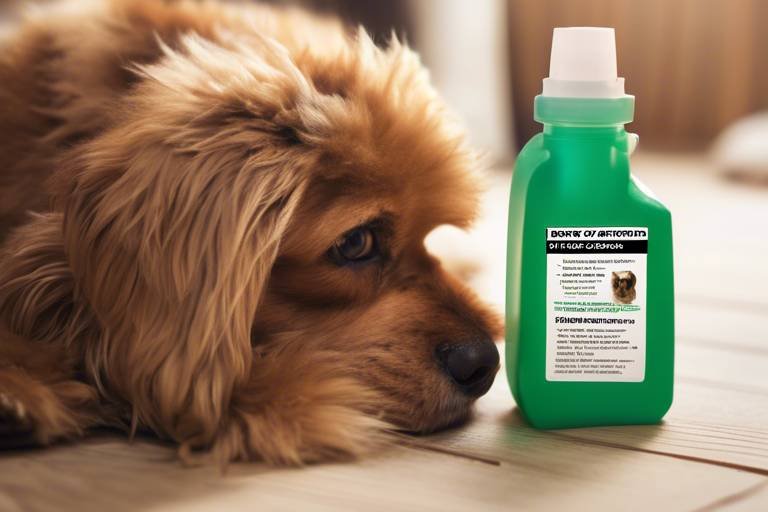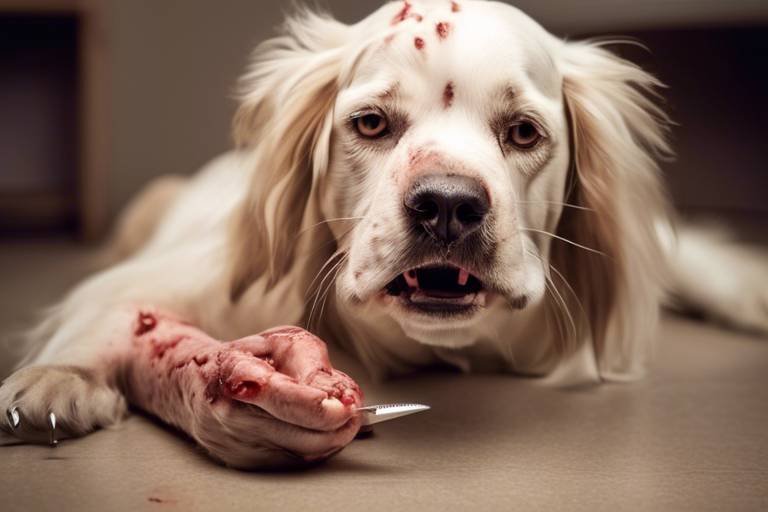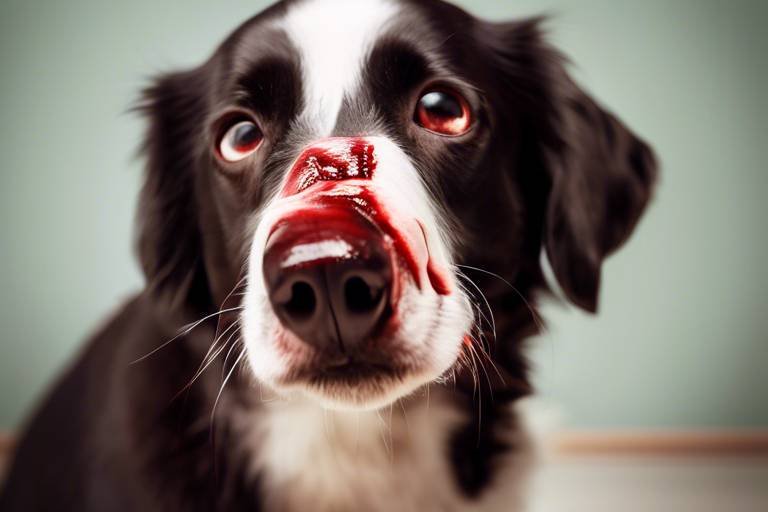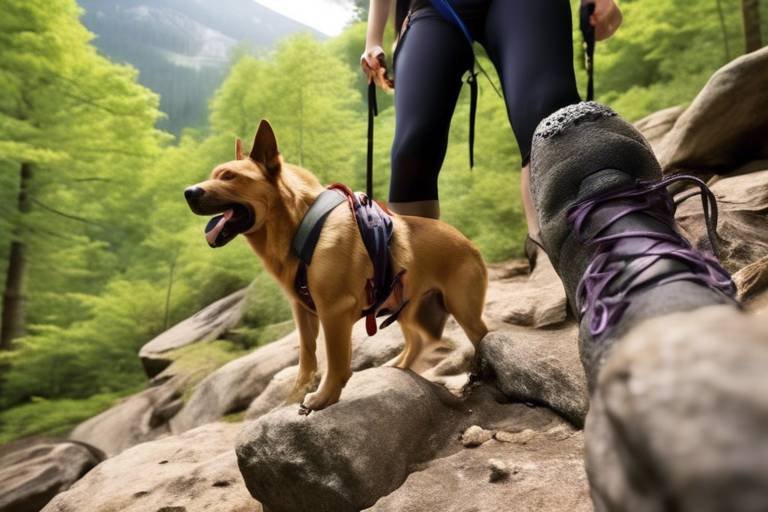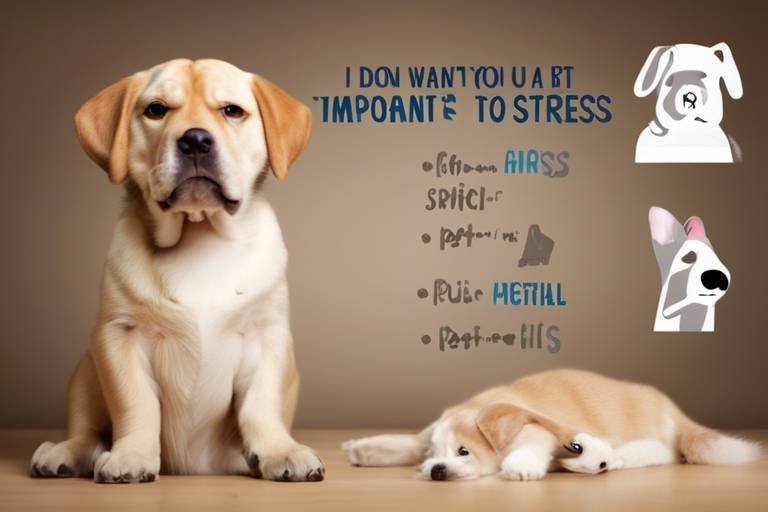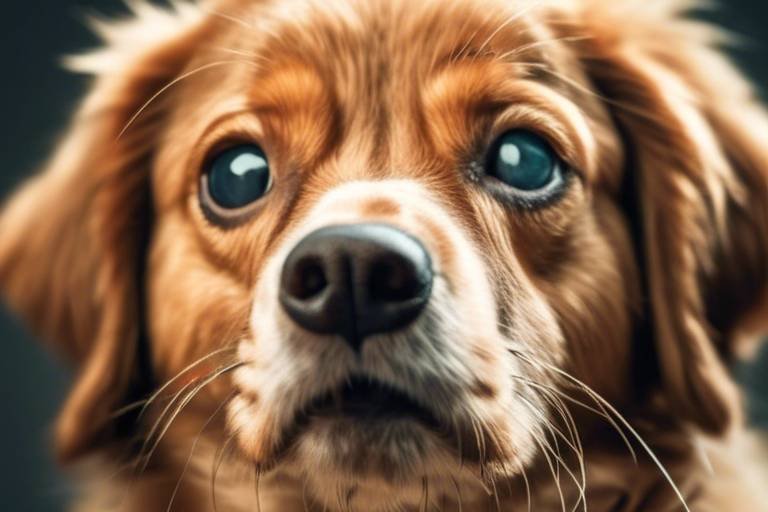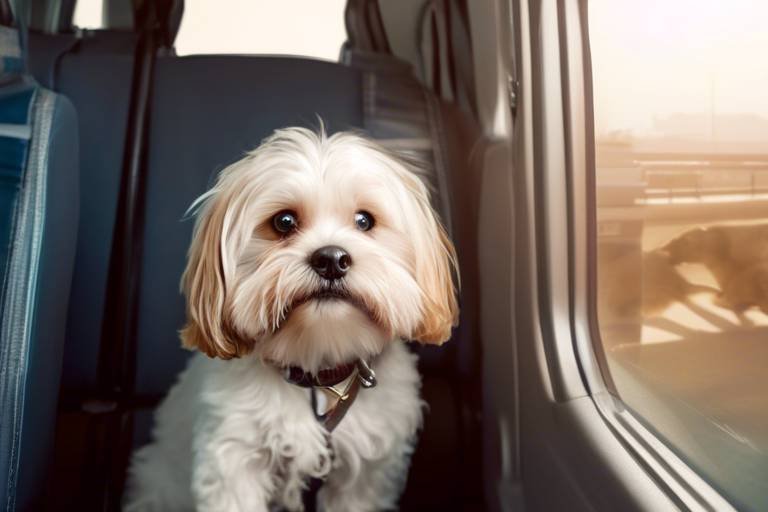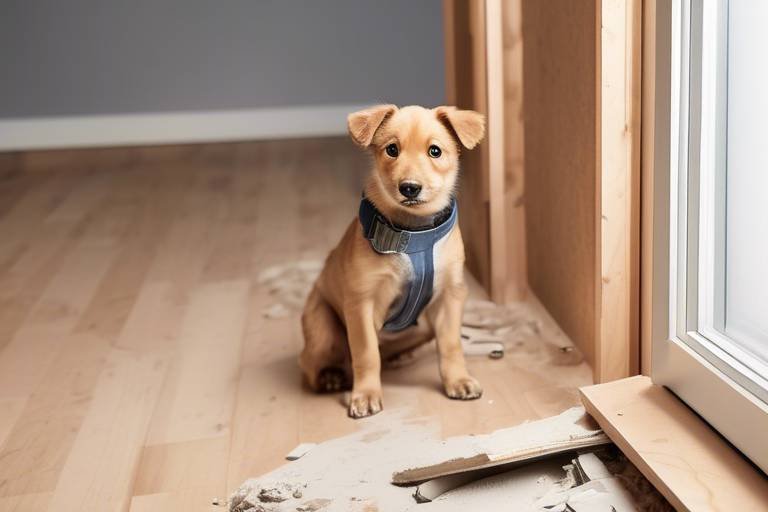What to Do If Your Pet Has a Heatstroke
As the temperature rises, our furry friends become vulnerable to the dangers of heatstroke. It's a serious condition that can escalate quickly, often turning a fun day outside into a frantic race against time. So, what do you do if you suspect your pet is suffering from heatstroke? First and foremost, stay calm. Your pet can sense your anxiety, and remaining composed will help you think clearly and act decisively. Remember, knowledge is power. By understanding the signs and symptoms of heatstroke, you can take immediate action and potentially save your pet's life.
Heatstroke occurs when a pet's body temperature rises to dangerously high levels, typically above 104°F (40°C). This can happen when pets are left in hot cars, exposed to direct sunlight for too long, or engaged in vigorous exercise on hot days. The symptoms can be subtle at first but can quickly intensify. Look out for excessive panting, drooling, weakness, and disorientation. If you notice any of these signs, it's crucial to act fast. The quicker you respond, the better the chance of a positive outcome for your beloved companion.
Once you've identified the symptoms, the next step is to administer first aid. Start by moving your pet to a cooler environment, ideally indoors or in the shade. Gradually cool them down with cool, wet towels placed on their body, focusing on areas like the neck, armpits, and groin. Avoid using ice-cold water, as it can cause a rapid drop in temperature and lead to shock. Instead, aim for a gentle cooling process that allows their body to stabilize. Additionally, it's important to offer small amounts of water frequently. Hydration is key in helping your pet recover from heat stress.
Now, you might be wondering, "When should I seek veterinary help?" If your pet's symptoms persist or worsen despite your first aid efforts, don't hesitate to contact your veterinarian. Professional medical intervention may be necessary to ensure your pet's recovery and to address any underlying issues that could have contributed to the heatstroke. Remember, it's always better to be safe than sorry when it comes to your pet's health.
Preventing heatstroke is always preferable to treating it. During hot weather, try to keep your pets indoors during peak heat hours, usually between 10 AM and 4 PM. Ensure they have access to fresh water at all times and consider investing in cooling mats or pet-safe fans to help regulate their body temperature. Keep an eye on your pets during outdoor activities, and if you notice any signs of distress, take action immediately.
Some pets are more susceptible to heatstroke than others. Brachycephalic breeds like Bulldogs and Pugs, older animals, and those with pre-existing health conditions are particularly at risk. Understanding these risk factors can help you take the necessary precautions to keep your furry friends safe during the sweltering summer months. Additionally, being aware of breed-specific concerns and health considerations can guide you in making informed decisions about your pet's outdoor activities.
After a heatstroke incident, long-term care is essential for ensuring your pet's recovery. Monitor their behavior closely and watch for any lingering symptoms, such as lethargy or unusual drinking habits. Regular check-ups with your veterinarian can help catch any potential complications early on. With the right care and attention, your pet can bounce back and enjoy many more happy, healthy days ahead.
- What are the first signs of heatstroke in pets? Look for excessive panting, drooling, weakness, and disorientation.
- Can I use ice packs to cool my pet? No, avoid using ice-cold water or ice packs as they can cause shock. Use cool, wet towels instead.
- How can I prevent heatstroke in my pet? Keep pets indoors during peak heat hours, provide ample water, and avoid strenuous activities on hot days.
- What should I do if my pet has heatstroke? Move them to a cooler area, cool them gradually, and seek veterinary care if symptoms persist.
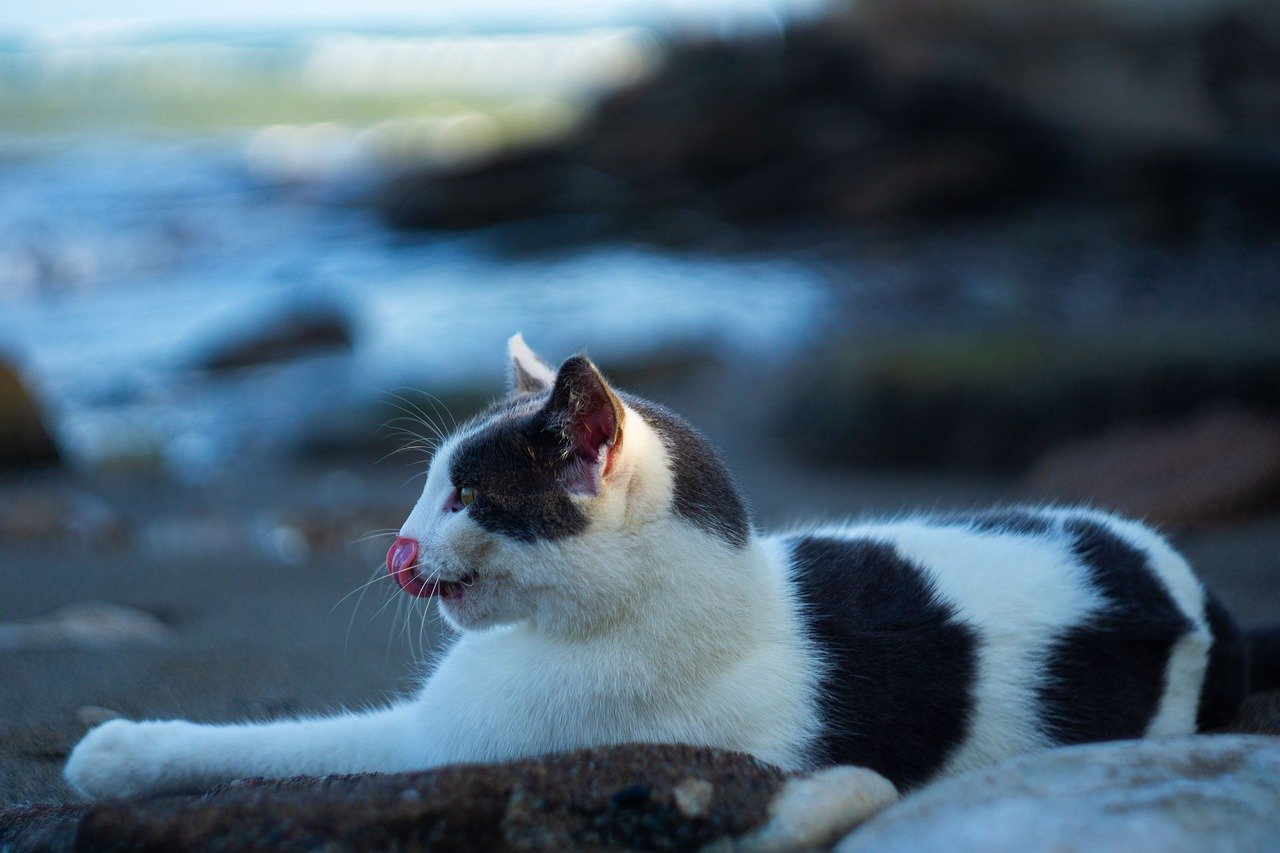
Recognizing the Symptoms of Heatstroke
Understanding the signs of heatstroke in pets is crucial for prompt action. When the temperature rises, our furry friends can quickly become overwhelmed, leading to serious health issues. So, how can you tell if your pet is suffering from heatstroke? Here are some key symptoms to watch out for:
- Excessive Panting: If your pet is panting heavily, it’s their way of trying to cool down. While panting is normal, excessive panting can be a red flag.
- Drooling: Notice an unusual amount of drool? This could indicate that your pet is struggling to regulate their body temperature.
- Weakness: If your pet seems unusually lethargic or has trouble standing, this could be a sign of heat-related stress.
- Disorientation: Is your pet acting confused or disoriented? This can happen when their body overheats, affecting their mental state.
In addition to these symptoms, you might also notice:
- Rapid Heart Rate: A quickened heartbeat can be a sign that your pet's body is in distress.
- Dark Red or Purple Tongue: A tongue that changes color can indicate serious overheating.
- Vomiting or Diarrhea: These gastrointestinal symptoms might surface as your pet's body struggles to cope with the heat.
It’s important to remember that not all pets will exhibit the same symptoms, and some may show signs more subtly than others. For instance, older pets or those with pre-existing health issues may not exhibit the typical signs of distress, making it all the more vital for pet owners to stay vigilant during hot weather. If you notice any of these symptoms, don't wait—take action immediately!
Heatstroke can escalate rapidly, and your pet’s health can deteriorate within minutes. The key is to remain observant and proactive. If you suspect your pet is suffering from heatstroke, it’s essential to act quickly, as their safety and well-being depend on your prompt response.
Q: What should I do if I suspect my pet has heatstroke?
A: Move your pet to a cooler area immediately, offer them water, and begin cooling them down. If symptoms persist, seek veterinary help without delay.
Q: Can heatstroke happen indoors?
A: Yes, heatstroke can occur indoors, especially in poorly ventilated areas or if your pet is left in a hot car.
Q: Are certain breeds more prone to heatstroke?
A: Absolutely! Brachycephalic breeds (like Bulldogs and Pugs) are particularly susceptible due to their unique respiratory systems.
Q: How can I prevent heatstroke in my pet?
A: Keep your pets indoors during peak heat hours, ensure they have access to fresh water, and avoid strenuous activities on hot days.
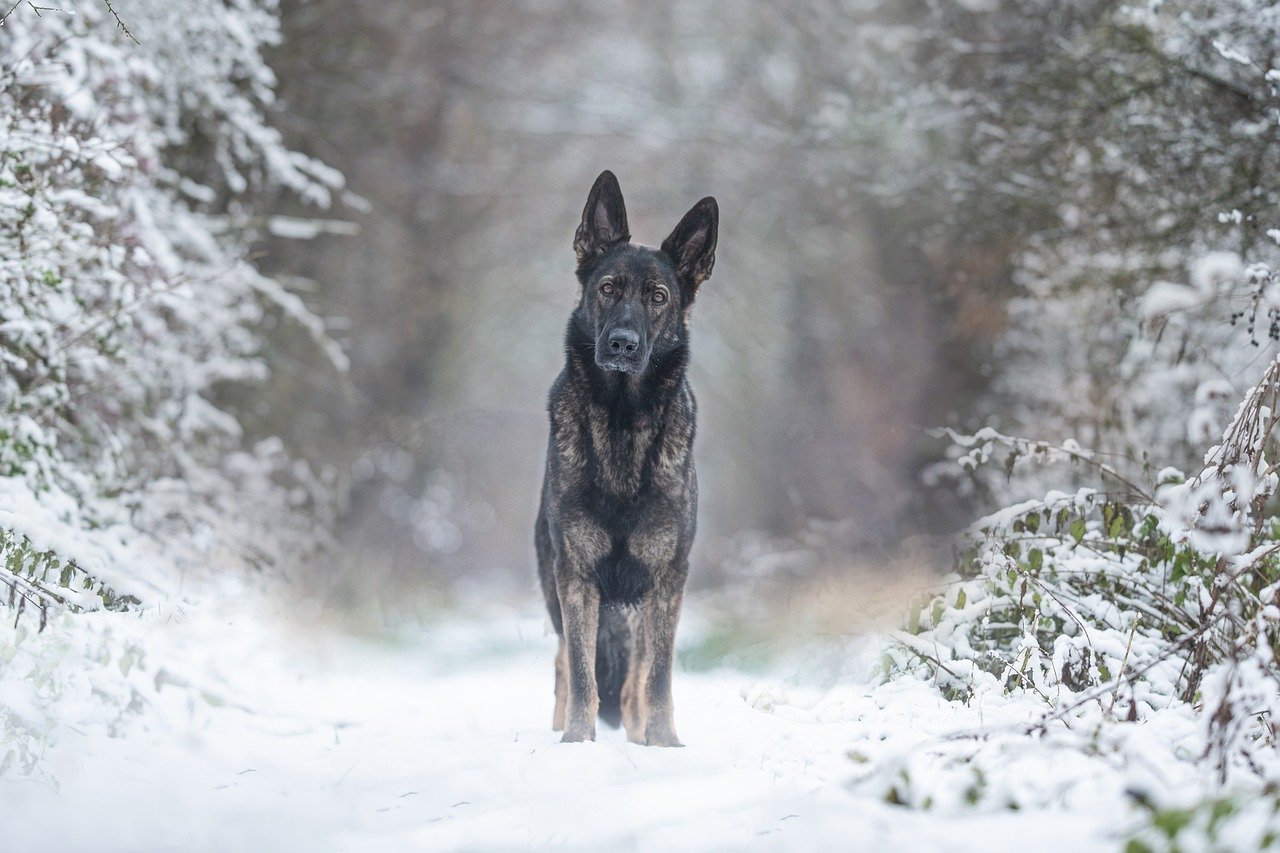
Immediate First Aid Steps
When your beloved pet shows signs of heatstroke, every second counts. Knowing how to react swiftly can mean the difference between life and death. First and foremost, remain calm. Your pet can sense your anxiety, which may only add to their distress. Begin by moving your pet to a cooler area, ideally indoors or in the shade, where they can begin to cool down. This is the first step in a series of actions you can take to help them recover.
Next, gradually cool your pet down. You can do this by using cool, wet towels. Drape them over your pet's body, especially around the neck, armpits, and groin area, where blood vessels are closer to the skin's surface. This will help lower their body temperature effectively. Avoid using ice-cold water or ice packs, as they can cause shock and worsen the situation. Instead, aim for a gentle cooling process.
While you’re cooling them down, it’s essential to provide water. Offer small amounts of cool water frequently, but don’t force them to drink. If your pet is too disoriented or weak to drink on their own, you can use a syringe (without a needle) to gently squirt water into their mouth. Hydration is crucial, as it helps their body regulate temperature and recover from heat stress.
It’s also important to monitor your pet's vital signs during this process. Keep an eye on their breathing and heart rate. If they seem to be recovering, continue cooling them down for about 10-15 minutes, then check their temperature with a rectal thermometer. Ideally, a normal temperature for dogs is between 100.5°F and 102.5°F (38°C to 39.2°C). If their temperature remains above 103°F (39.4°C), continue cooling them and seek veterinary assistance immediately.
After you’ve taken these first aid steps, it’s crucial to seek veterinary help even if your pet seems to improve. Heatstroke can cause internal damage that may not be immediately apparent. A veterinarian can provide a thorough examination and any necessary treatment to ensure your furry friend recovers fully. Remember, a quick response can save your pet's life!
In summary, here are the immediate first aid steps you should follow:
- Move your pet to a cooler area.
- Gradually cool them down with cool, wet towels.
- Provide small amounts of cool water.
- Monitor vital signs and temperature.
- Seek veterinary help regardless of improvement.
Cooling Techniques to Use
When your furry friend is suffering from heatstroke, it's essential to act swiftly and effectively. The goal is to cool them down gradually, as a sudden drop in temperature can lead to shock. Think of it like trying to cool down a boiling pot of water; if you pour in ice cold water too quickly, it can lead to a violent reaction. Instead, we want to ease our pets into a more comfortable state.
One of the most effective methods to cool your pet is by using cool, wet towels. You can soak towels in cool water and gently place them on areas where blood vessels are close to the surface, such as the neck, armpits, and groin. This allows the coolness to penetrate and help lower their body temperature. Avoid using ice-cold water, as it can constrict blood vessels and hinder the cooling process.
Another technique involves the use of a fan. If you have a fan handy, position it so that it blows air over your pet while they are lying on a cool surface. This method not only helps evaporate the moisture from their skin but also promotes heat loss through airflow. Imagine standing in front of a fan on a hot day; the sensation is refreshing and can make a significant difference for your pet.
Additionally, you can fill a bathtub or a kiddie pool with cool water and encourage your pet to step in. However, make sure the water is not too cold. A gentle dip can work wonders, but if your pet shows signs of distress, remove them immediately. Remember, the aim is to keep them comfortable, not to send them into shock.
While these techniques are effective, always keep an eye on your pet's condition. If they seem disoriented or their symptoms persist, don't hesitate to seek veterinary assistance. It's always better to be safe than sorry when it comes to our beloved companions.
- How do I know if my pet is overheating? Look for signs such as excessive panting, drooling, weakness, or disorientation.
- Can I use ice directly on my pet? No, avoid using ice or ice-cold water as it can cause shock. Use cool water instead.
- What should I do if my pet doesn't want to drink water? Offer small amounts of water frequently and try to encourage them gently. You can also offer ice chips if they prefer.
- How can I prevent heatstroke in my pet? Keep your pet indoors during peak heat hours, provide plenty of water, and avoid strenuous activities in hot weather.
Hydration Importance
When it comes to keeping your furry friend safe during those scorching summer days, hydration is not just important; it's absolutely essential! Just like humans, pets can suffer from dehydration, especially when exposed to high temperatures. Imagine running a marathon without water—your pet feels the same way when they’re panting heavily under the sun. So, how do you ensure your pet stays hydrated?
First and foremost, always provide your pet with access to fresh, clean water. This might sound simple, but it's a game-changer! You can set up multiple water bowls around your home and yard, making it convenient for your pet to hydrate whenever they feel the need. Also, consider using a pet water fountain; many pets are attracted to running water, which can encourage them to drink more.
During hot weather, it’s crucial to offer your pet small amounts of water frequently. Instead of letting them gulp down a whole bowl at once, try to encourage them to sip regularly. You can even add a splash of low-sodium chicken broth to their water to make it more enticing. Remember, hydration isn’t just about drinking—wet food can also contribute to your pet's fluid intake. If your pet is a fan of wet food, this can be an excellent way to boost their hydration levels.
To help you keep track of your pet's hydration, here’s a quick table highlighting some signs of dehydration:
| Signs of Dehydration | Description |
|---|---|
| Dry Gums | Healthy gums should be moist and pink. If they appear dry or sticky, it’s a warning sign. |
| Loss of Skin Elasticity | Gently pinch the skin on the back of your pet’s neck; if it doesn’t return to its normal position quickly, your pet may be dehydrated. |
| Excessive Panting | Panting is normal, but if it’s excessive, it could indicate heat stress or dehydration. |
| Sunken Eyes | Eyes that appear sunken or dull can be a sign of dehydration. |
In addition to monitoring their water intake, keep an eye on your pet's behavior. Are they lethargic or less active than usual? These could be signs that they need a drink! If you notice any concerning symptoms, it’s always best to consult your veterinarian. They can provide tailored advice based on your pet’s specific needs and health conditions.
Ultimately, keeping your pet hydrated during hot weather is a simple yet effective way to ensure their well-being. Just think of it as providing them with a refreshing drink on a hot day—after all, who doesn’t love a cold beverage when the temperature rises? So, make hydration a priority, and you’ll both enjoy those sunny days to the fullest!
- How much water should my pet drink daily?
The general rule of thumb is about 1 ounce of water per pound of body weight. However, this can vary based on activity level, diet, and weather conditions.
- Can I give my pet ice cubes to cool them down?
While ice cubes can be fun for pets, they should be given in moderation. Too many ice cubes can lead to shock, especially if your pet is overheated.
- What are some signs that my pet is overheating?
Look for excessive panting, drooling, weakness, or disorientation. If you notice these signs, take immediate action to cool them down!
When to Seek Veterinary Help
Recognizing when to seek veterinary help for your pet after a heatstroke incident can be a matter of life and death. It’s essential to remain vigilant and understand that not all symptoms are immediately apparent. If your pet is showing any of the following signs, it's crucial to contact your veterinarian as soon as possible:
- Persistent Symptoms: If your pet continues to pant excessively or seems lethargic even after cooling down, this could indicate that their condition is worsening.
- Vomiting or Diarrhea: These symptoms can lead to dehydration and may signify that your pet's body is struggling to recover.
- Seizures or Disorientation: Any signs of confusion or seizures are serious and require immediate medical attention.
- Rapid Heart Rate: If your pet's heart rate remains elevated for an extended period, it could be a sign of distress.
- Difficulty Breathing: Labored breathing or any indication that your pet is having trouble catching their breath should prompt an urgent call to your vet.
Even if your pet seems to be recovering, it’s always better to err on the side of caution. Heatstroke can have long-term effects on your pet's health, and your veterinarian can provide guidance on monitoring their recovery and any necessary follow-up care. Remember, the sooner you act, the better the outcomes tend to be. Don’t hesitate to reach out for help—your pet depends on you to make the right call.
Here are some common questions pet owners have regarding heatstroke:
- What are the first signs of heatstroke in pets? Look for excessive panting, drooling, weakness, and disorientation.
- Can heatstroke happen indoors? Yes, heatstroke can occur indoors, especially in poorly ventilated areas or during extreme heat.
- How can I prevent heatstroke in my pet? Keep your pet indoors during peak heat hours, provide plenty of water, and ensure they have access to shade.
- What should I do if my pet has heatstroke? Cool them down gradually with cool, wet towels and provide water, then seek veterinary help immediately.
Preventive Measures for Hot Weather
When the sun blazes down and temperatures soar, it's essential to take proactive steps to keep your furry friends safe from the dangers of heatstroke. Just like we wouldn't want to be caught in a heatwave without a cool drink, our pets need similar protection. Here are some effective preventive measures to consider:
1. Limit Outdoor Activities: During the hottest parts of the day, typically between 10 AM and 4 PM, it's wise to keep your pets indoors. Instead of long walks or playtime in the park, opt for early morning or late evening strolls when the air is cooler. Think of it as a "siesta" for your pet, allowing them to rest and avoid the sweltering heat.
2. Provide Ample Water: Hydration is key in preventing heat-related issues. Make sure your pet has constant access to fresh, cool water. You might even consider adding ice cubes to their bowl on particularly hot days. It's like giving them their own little summer treat! Remember, a dehydrated pet is a vulnerable pet.
3. Create a Cool Environment: Ensure your home is a refuge from the heat. Use fans or air conditioning to keep indoor spaces comfortable. If your pet enjoys lounging outside, provide shaded areas where they can escape the sun. A kiddie pool filled with cool water can also be a fun way for them to cool off while playing.
4. Grooming Matters: Regular grooming can significantly help your pet manage heat. For dogs with thick fur, consider a summer haircut to keep them cooler. However, avoid shaving them too close to the skin, as their fur also protects them from sunburn. It's all about finding that perfect balance!
5. Watch for Signs: Always be vigilant about your pet's behavior. If they seem lethargic or are panting excessively, it might be time to bring them inside and cool them down. Being proactive can prevent a minor issue from escalating into a serious situation.
By implementing these preventive measures, you can create a safer environment for your pets during hot weather. Remember, it's not just about keeping them cool; it's about ensuring their overall well-being. Just like we would take care of ourselves in the heat, our pets deserve the same level of attention and care.
Q: Can I leave my pet in a parked car for a short time?
A: No, it is extremely dangerous to leave pets in parked cars, even for a few minutes. The temperature inside a car can rise rapidly, leading to heatstroke or worse.
Q: Are certain breeds more susceptible to heatstroke?
A: Yes, brachycephalic breeds (like Bulldogs and Pugs) and older pets are more vulnerable to heat-related issues due to their physical characteristics and health conditions.
Q: What should I do if I suspect my pet has heatstroke?
A: Immediately move your pet to a cooler area, offer small amounts of water, and apply cool (not ice-cold) wet towels to their body. Seek veterinary attention as soon as possible.
Q: How can I help my pet acclimate to warmer weather?
A: Gradually increase their outdoor activity time in warmer temperatures, allowing their body to adjust. Always monitor their comfort levels during this process.
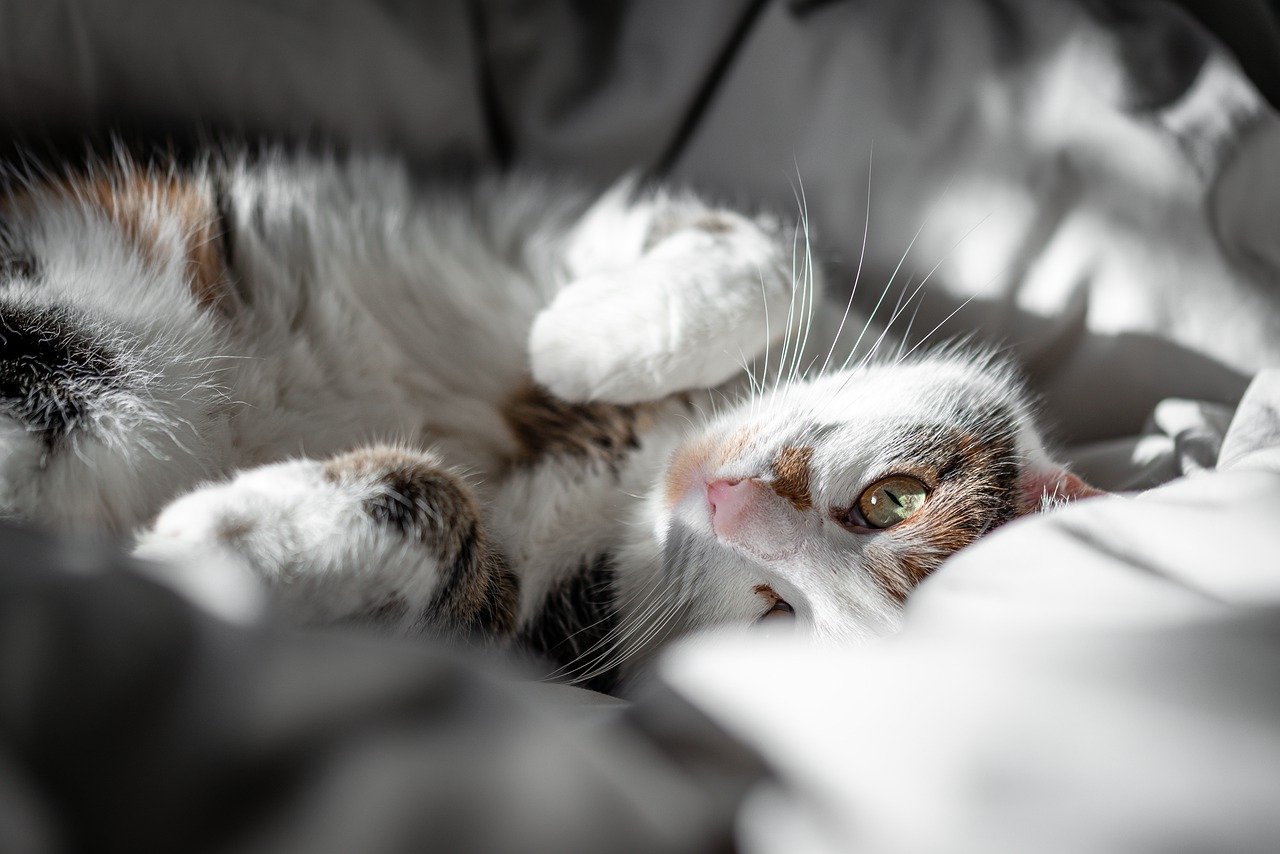
Understanding Risk Factors
When it comes to heatstroke, not all pets are created equal. Some furry friends are more vulnerable to the sweltering heat than others. Understanding these risk factors can be a game-changer for pet owners. For instance, brachycephalic breeds—like Bulldogs and Pugs—are notorious for their struggles in hot weather. Their short snouts make it harder for them to breathe, especially when the temperature rises. It's like trying to run a marathon while wearing a mask; it’s just not going to end well.
Additionally, age plays a significant role in a pet's ability to cope with heat. Elderly animals often have weakened systems and may not regulate their body temperature as efficiently as younger pets. Imagine an old car trying to keep up with a sports car; it just can’t handle the same demands. Similarly, pets with pre-existing health conditions—such as heart disease or respiratory issues—are at a heightened risk. Their bodies are already fighting an uphill battle, and the heat can push them over the edge.
To give you a clearer picture, here’s a brief table highlighting the different risk factors:
| Risk Factor | Description |
|---|---|
| Brachycephalic Breeds | Breeds with short snouts that struggle to breathe in heat. |
| Elderly Pets | Older animals may have a reduced ability to cope with heat. |
| Pre-existing Health Conditions | Pets with heart or respiratory issues are more susceptible. |
| Obesity | Overweight pets have a harder time regulating body temperature. |
In addition to these factors, obesity can also play a significant role in heat susceptibility. Just like humans, pets with extra weight may find it challenging to cool down. Their bodies work overtime to regulate temperature, which can lead to heat stress. Thus, maintaining a healthy weight is not just about looks; it’s about keeping your pet safe during those hot summer days.
So, what can you do to protect your pet? Awareness is key. By recognizing these risk factors and adjusting your pet care routine accordingly, you can make a world of difference. For instance, if you own a brachycephalic breed, consider shorter walks during the cooler parts of the day. And for older pets or those with health issues, providing a cool, shaded area to rest can be lifesaving.
Breed-Specific Concerns
When it comes to heatstroke, not all pets are created equal. Some breeds are particularly vulnerable to heat-related illnesses due to their physical characteristics. For instance, brachycephalic breeds—those with short noses and flat faces like Bulldogs, Pugs, and Boxers—struggle to breathe efficiently in high temperatures. Their compromised respiratory systems make it difficult for them to cool down through panting, putting them at a heightened risk for heatstroke. Imagine trying to run a marathon while wearing a mask; that’s how these dogs feel in the heat!
Additionally, certain breeds, such as Huskies and Malinois, are built for colder climates and can suffer when temperatures soar. These breeds have thick coats that can trap heat, making it essential for owners to monitor their activity levels and keep them cool during hot days. Just like you wouldn’t want to wear a winter coat in the middle of summer, these pets need special attention to avoid overheating.
In terms of age, both puppies and senior pets are also at greater risk. Puppies, still developing their bodies, may not have the same ability to regulate their body temperature, while older pets often face health issues that can exacerbate heat stress. If you have a senior pet, consider keeping them indoors during peak heat hours and providing them with a cool, shaded area to rest.
Understanding your pet's breed characteristics can help you take necessary precautions during hot weather. Here’s a quick reference table to illustrate some breed-specific concerns:
| Breed | Heat Sensitivity Level | Precautions |
|---|---|---|
| Brachycephalic Breeds | High | Avoid strenuous activities; keep cool indoors. |
| Huskies | Medium | Limit outdoor time; provide plenty of water. |
| Senior Pets | High | Monitor closely; ensure a cool resting place. |
| Puppies | Medium | Supervise playtime; avoid heat exposure. |
By being aware of these breed-specific concerns, you can take proactive steps to ensure your furry friend remains safe and healthy during the sweltering summer months. Always remember, your pet relies on you to make the right choices for their well-being!
- What are the signs of heatstroke in pets? Look for excessive panting, drooling, weakness, and disorientation.
- How can I cool my pet down? Use cool, wet towels, and provide fresh water, but avoid ice-cold water.
- When should I take my pet to the vet? If symptoms persist or worsen, seek veterinary care immediately.
- What breeds are most at risk for heatstroke? Brachycephalic breeds, elderly pets, and certain long-haired breeds are particularly vulnerable.
Age and Health Considerations
When it comes to our furry companions, age and overall health are critical factors that can significantly influence their ability to cope with heat. Just like humans, pets experience changes in their bodies as they age, and these changes can make them more vulnerable to heat-related issues. For instance, older pets may have a slower metabolism and reduced ability to regulate their body temperature. This means that what might be a comfortable temperature for a younger, sprightly pup could feel like a sauna to an elderly dog.
Moreover, pets with pre-existing health conditions, such as heart disease, obesity, or respiratory issues, are at a heightened risk of experiencing heatstroke. These conditions can impair their natural cooling mechanisms, making it essential for pet owners to be extra vigilant during hot weather. It’s like trying to run a marathon with a heavy backpack; the extra weight makes it much harder to keep pace, and the same goes for pets dealing with health problems in the heat.
In addition, certain breeds are more susceptible to heat stress due to their physical characteristics. For example, brachycephalic breeds—those with short noses like Bulldogs and Pugs—struggle with airflow and can overheat quickly. If you own one of these breeds, it’s crucial to monitor them closely and limit their outdoor activities during peak heat.
To help you understand how age and health can impact your pet's heat tolerance, here’s a quick overview:
| Category | Considerations |
|---|---|
| Young Pets | Generally more resilient, but still need supervision to avoid overheating during play. |
| Adult Pets | Usually handle heat well but should be monitored for signs of distress. |
| Senior Pets | More vulnerable; need shade, water, and limited exercise during hot periods. |
| Pets with Health Issues | At higher risk; consult your vet for specific guidelines on heat exposure. |
Being aware of these considerations can help you make informed decisions about your pet's care during the warmer months. Always remember that prevention is key. If you notice your pet showing signs of heat stress—such as excessive panting, drooling, or lethargy—immediate action is necessary. It’s better to be proactive than reactive when it comes to your beloved pet’s health.
- What are the early signs of heatstroke in pets? Look for excessive panting, drooling, weakness, and disorientation.
- How can I cool down my pet safely? Use cool, wet towels on their body and provide small amounts of water frequently.
- When should I take my pet to the vet? If symptoms persist or worsen, seek veterinary help immediately.
- Are certain breeds more at risk for heatstroke? Yes, brachycephalic breeds and older pets are particularly vulnerable.
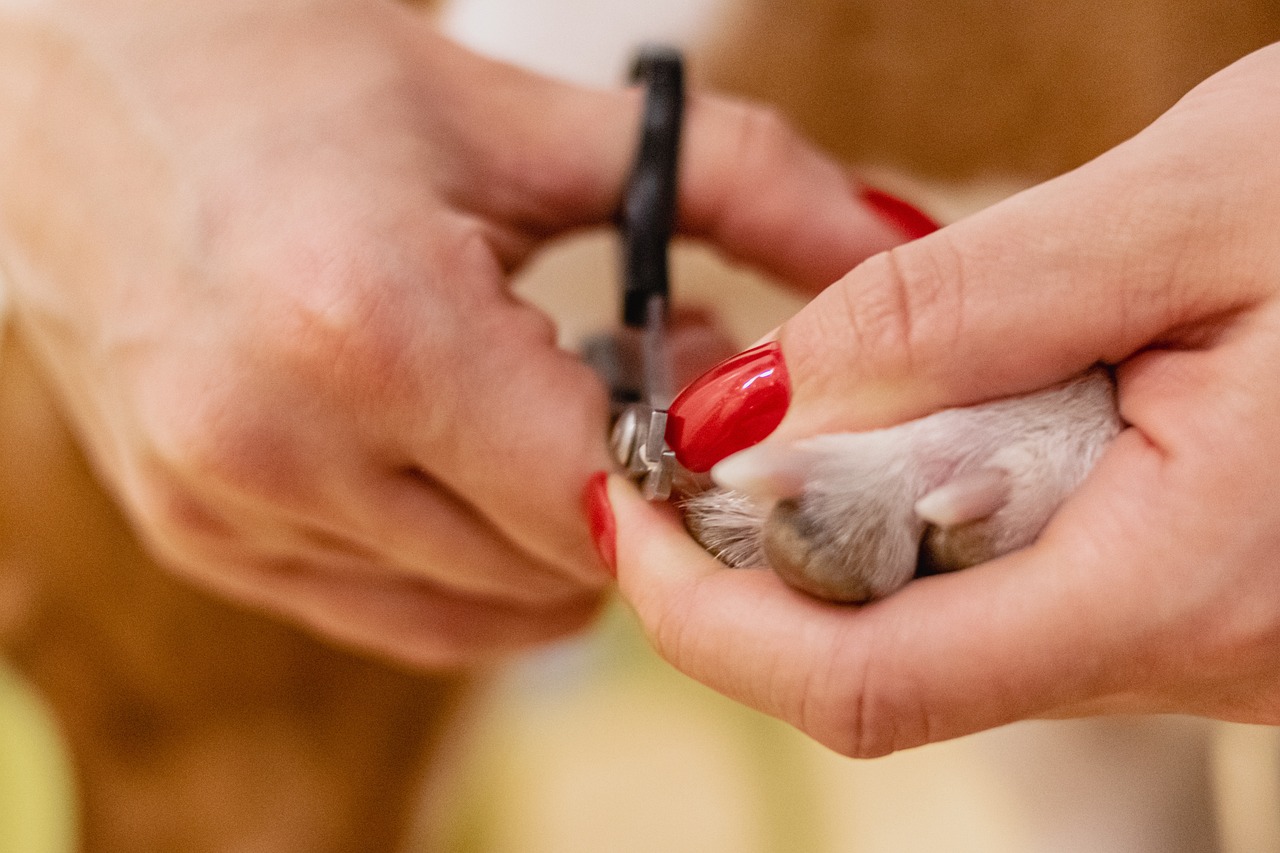
Long-Term Care After Heatstroke
After your beloved pet has experienced heatstroke, long-term care becomes paramount to ensure their full recovery and to prevent future incidents. Just like humans, pets can suffer from lingering effects after a heat-related event, so it’s crucial to monitor their behavior closely. Keep an eye on their energy levels and watch for any unusual signs that may indicate they are not fully back to their normal selves.
One of the first things you should do is establish a comfortable environment for your pet. Make sure they have access to cool, shaded areas, especially during hot weather. Create a cozy spot indoors where they can relax away from the heat. This can make a huge difference in their recovery. Remember, a cool environment helps in regulating their body temperature, which is essential after experiencing heat stress.
Additionally, monitoring their hydration is vital. After heatstroke, pets may not feel like drinking water immediately. Offer them small amounts frequently, and consider adding ice cubes to their water bowl to entice them. You can also provide electrolyte solutions designed for pets, which can help replenish lost minerals and fluids. Hydration aids in recovery and keeps their organs functioning properly.
Another important aspect of long-term care is regular veterinary check-ups. Schedule a follow-up appointment with your vet to assess your pet’s health after the incident. Your veterinarian can provide tailored advice and may recommend specific tests to ensure that there are no underlying issues. This is particularly important for pets that are older or have pre-existing health conditions, as they may be more vulnerable to complications.
In addition to physical health, pay attention to your pet's behavioral changes. After experiencing a stressful event like heatstroke, pets may exhibit anxiety or fear. They might become more clingy or show signs of distress when exposed to heat. Providing a calm and reassuring presence can help alleviate their anxiety. Engaging in gentle play or offering comforting toys can also aid in their emotional recovery. Just like us, pets need time to heal mentally after a frightening experience.
Lastly, consider implementing preventive measures to ensure your pet stays safe in the future. This includes keeping them indoors during the hottest parts of the day and providing plenty of fresh water. You might also want to invest in pet cooling mats or vests designed to help regulate their body temperature during warm weather. By being proactive, you can significantly reduce the risk of heatstroke happening again.
- How long does it take for a pet to recover from heatstroke? Recovery can vary, but many pets start to feel better within a few days. It's essential to monitor them closely.
- What are the signs of heatstroke in pets? Symptoms include excessive panting, drooling, weakness, and disorientation. If you notice these, act quickly!
- Can heatstroke cause long-term damage? Yes, severe cases can lead to organ damage. That's why follow-up care is crucial.
- What should I do if my pet refuses to drink water after heatstroke? Try offering ice cubes or electrolyte solutions designed for pets to encourage hydration.
Frequently Asked Questions
- What are the early signs of heatstroke in pets?
Early signs of heatstroke in pets include excessive panting, drooling, weakness, and disorientation. If you notice your pet displaying any of these symptoms, it's crucial to act quickly to prevent further complications.
- How can I cool my pet down effectively?
To cool your pet down, you can use cool, wet towels on their body, or place them in a shaded area with a fan. It's important to avoid using ice-cold water, as this can lead to shock. Instead, aim for a gradual cooling process.
- When should I take my pet to the vet?
If your pet's symptoms persist or worsen despite your cooling efforts, it's essential to seek veterinary care immediately. Delaying treatment can lead to serious health issues, so trust your instincts if something feels off.
- What preventive measures can I take to avoid heatstroke?
To prevent heatstroke, keep your pets indoors during the hottest parts of the day, provide plenty of fresh water, and ensure they have a cool place to rest. Regular breaks during outdoor activities can also help keep them safe.
- Are certain breeds more prone to heatstroke?
Yes, some breeds, particularly brachycephalic ones like Bulldogs and Pugs, are more susceptible to heat-related issues due to their unique respiratory structures. It's important for owners of these breeds to be extra vigilant during hot weather.
- What should I do after my pet recovers from heatstroke?
After your pet has recovered from heatstroke, monitor their behavior closely for any changes or lingering effects. Ensure they stay hydrated and avoid excessive heat exposure in the days following their recovery.

